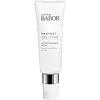What's inside
What's inside
 Key Ingredients
Key Ingredients

 Benefits
Benefits

 Concerns
Concerns

 Ingredients Side-by-side
Ingredients Side-by-side

Water
Skin ConditioningHomosalate
Skin ConditioningPolymethylsilsesquioxane
Butyl Methoxydibenzoylmethane
UV AbsorberEthylhexyl Salicylate
UV AbsorberOctocrylene
UV AbsorberAlcohol Denat.
AntimicrobialTapioca Starch
Phenylbenzimidazole Sulfonic Acid
UV AbsorberCyclomethicone
EmollientBehenyl Alcohol
EmollientCetearyl Alcohol
EmollientMethylpropanediol
SolventSilica Dimethyl Silylate
EmollientGlycerin
HumectantCarnitine
CleansingGlycyrrhetinic Acid
Skin ConditioningGlycyrrhiza Inflata Root Extract
Skin ConditioningSodium Stearoyl Glutamate
CleansingAcrylates/C10-30 Alkyl Acrylate Crosspolymer
Emulsion StabilisingCarbomer
Emulsion StabilisingXanthan Gum
EmulsifyingSodium Hydroxide
BufferingSodium Chloride
MaskingTrisodium EDTA
Ethylhexylglycerin
Skin ConditioningPhenoxyethanol
PreservativeWater, Homosalate, Polymethylsilsesquioxane, Butyl Methoxydibenzoylmethane, Ethylhexyl Salicylate, Octocrylene, Alcohol Denat., Tapioca Starch, Phenylbenzimidazole Sulfonic Acid, Cyclomethicone, Behenyl Alcohol, Cetearyl Alcohol, Methylpropanediol, Silica Dimethyl Silylate, Glycerin, Carnitine, Glycyrrhetinic Acid, Glycyrrhiza Inflata Root Extract, Sodium Stearoyl Glutamate, Acrylates/C10-30 Alkyl Acrylate Crosspolymer, Carbomer, Xanthan Gum, Sodium Hydroxide, Sodium Chloride, Trisodium EDTA, Ethylhexylglycerin, Phenoxyethanol
Water
Skin ConditioningEthylhexyl Methoxycinnamate
UV AbsorberDiethylamino Hydroxybenzoyl Hexyl Benzoate
UV FilterEthylhexyl Triazone
UV AbsorberDibutyl Adipate
EmollientGlycerin
HumectantMethyl Methacrylate Crosspolymer
Phenylbenzimidazole Sulfonic Acid
UV AbsorberBis-Ethylhexyloxyphenol Methoxyphenyl Triazine
Skin ConditioningArginine
MaskingUndecane
EmollientLauryl Glucoside
CleansingPolyglyceryl-2 Dipolyhydroxystearate
Skin ConditioningTridecane
PerfumingAluminum Starch Octenylsuccinate
AbsorbentTocopheryl Acetate
AntioxidantDimethicone
EmollientPanthenol
Skin ConditioningPhenoxyethanol
PreservativeMaltodextrin
AbsorbentXanthan Gum
EmulsifyingButylene Glycol
HumectantMethylparaben
PreservativeEthylparaben
PreservativeDisodium EDTA
Propylene Glycol
HumectantPentylene Glycol
Skin ConditioningCassia Alata Leaf Extract
AstringentCitric Acid
BufferingCaesalpinia Spinosa Fruit Extract
Skin ProtectingCaprylic/Capric Triglyceride
MaskingSodium Carboxymethyl Beta-Glucan
CleansingTocopherol
AntioxidantAscorbyl Tetraisopalmitate
AntioxidantBiosaccharide Gum-4
Skin ConditioningHelianthus Annuus Sprout Extract
Skin ConditioningPantolactone
HumectantCarbomer
Emulsion StabilisingHelianthus Annuus Seed Oil
EmollientDna
Skin ConditioningWater, Ethylhexyl Methoxycinnamate, Diethylamino Hydroxybenzoyl Hexyl Benzoate, Ethylhexyl Triazone, Dibutyl Adipate, Glycerin, Methyl Methacrylate Crosspolymer, Phenylbenzimidazole Sulfonic Acid, Bis-Ethylhexyloxyphenol Methoxyphenyl Triazine, Arginine, Undecane, Lauryl Glucoside, Polyglyceryl-2 Dipolyhydroxystearate, Tridecane, Aluminum Starch Octenylsuccinate, Tocopheryl Acetate, Dimethicone, Panthenol, Phenoxyethanol, Maltodextrin, Xanthan Gum, Butylene Glycol, Methylparaben, Ethylparaben, Disodium EDTA, Propylene Glycol, Pentylene Glycol, Cassia Alata Leaf Extract, Citric Acid, Caesalpinia Spinosa Fruit Extract, Caprylic/Capric Triglyceride, Sodium Carboxymethyl Beta-Glucan, Tocopherol, Ascorbyl Tetraisopalmitate, Biosaccharide Gum-4, Helianthus Annuus Sprout Extract, Pantolactone, Carbomer, Helianthus Annuus Seed Oil, Dna
 Reviews
Reviews

Ingredients Explained
These ingredients are found in both products.
Ingredients higher up in an ingredient list are typically present in a larger amount.
Carbomer is a polymer of acrylic acid. Its main role is to create a gel consistency.
A high amount of carbomer can cause pilling or balling up of products. Don't worry, most products contain 1% or less of carbomer.
Glycerin is already naturally found in your skin. It helps moisturize and protect your skin.
A study from 2016 found glycerin to be more effective as a humectant than AHAs and hyaluronic acid.
As a humectant, it helps the skin stay hydrated by pulling moisture to your skin. The low molecular weight of glycerin allows it to pull moisture into the deeper layers of your skin.
Hydrated skin improves your skin barrier; Your skin barrier helps protect against irritants and bacteria.
Glycerin has also been found to have antimicrobial and antiviral properties. Due to these properties, glycerin is often used in wound and burn treatments.
In cosmetics, glycerin is usually derived from plants such as soybean or palm. However, it can also be sourced from animals, such as tallow or animal fat.
This ingredient is organic, colorless, odorless, and non-toxic.
Glycerin is the name for this ingredient in American English. British English uses Glycerol/Glycerine.
Learn more about GlycerinPhenoxyethanol is a preservative that has germicide, antimicrobial, and aromatic properties. Studies show that phenoxyethanol can prevent microbial growth. By itself, it has a scent that is similar to that of a rose.
It's often used in formulations along with Caprylyl Glycol to preserve the shelf life of products.
This ingredient is more commonly known as Ensulizole, a chemical sunscreen ingredient.
Ensulizole mainly protects UV-B (290-340 nm) but offers a little UV-A (320-400 nm) protection. It is often paired with less photo-stable sunscreen ingredients due to its photo-stability.
Due to it being water-soluble, Ensulizole helps give sunscreens a light and non-oily texture.
Ensulizole is approved worldwide:
Learn more about Phenylbenzimidazole Sulfonic AcidWater. It's the most common cosmetic ingredient of all. You'll usually see it at the top of ingredient lists, meaning that it makes up the largest part of the product.
So why is it so popular? Water most often acts as a solvent - this means that it helps dissolve other ingredients into the formulation.
You'll also recognize water as that liquid we all need to stay alive. If you see this, drink a glass of water. Stay hydrated!
Learn more about WaterXanthan gum is used as a stabilizer and thickener within cosmetic products. It helps give products a sticky, thick feeling - preventing them from being too runny.
On the technical side of things, xanthan gum is a polysaccharide - a combination consisting of multiple sugar molecules bonded together.
Xanthan gum is a pretty common and great ingredient. It is a natural, non-toxic, non-irritating ingredient that is also commonly used in food products.
Learn more about Xanthan Gum